Torben Bach Pedersen
Aalborg University
Advancing Knowledge Tracing by Exploring Follow-up Performance Trends
Aug 11, 2025


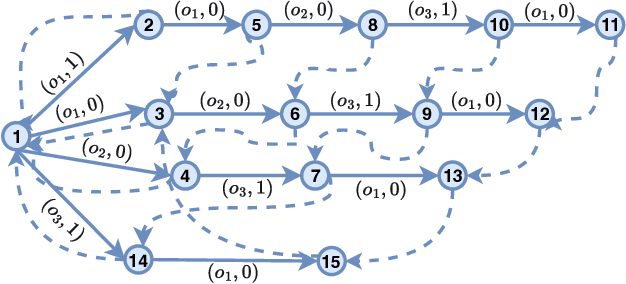
Abstract:Intelligent Tutoring Systems (ITS), such as Massive Open Online Courses, offer new opportunities for human learning. At the core of such systems, knowledge tracing (KT) predicts students' future performance by analyzing their historical learning activities, enabling an accurate evaluation of students' knowledge states over time. We show that existing KT methods often encounter correlation conflicts when analyzing the relationships between historical learning sequences and future performance. To address such conflicts, we propose to extract so-called Follow-up Performance Trends (FPTs) from historical ITS data and to incorporate them into KT. We propose a method called Forward-Looking Knowledge Tracing (FINER) that combines historical learning sequences with FPTs to enhance student performance prediction accuracy. FINER constructs learning patterns that facilitate the retrieval of FPTs from historical ITS data in linear time; FINER includes a novel similarity-aware attention mechanism that aggregates FPTs based on both frequency and contextual similarity; and FINER offers means of combining FPTs and historical learning sequences to enable more accurate prediction of student future performance. Experiments on six real-world datasets show that FINER can outperform ten state-of-the-art KT methods, increasing accuracy by 8.74% to 84.85%.
Extending the SAREF4ENER Ontology with Flexibility Based on FlexOffers
Apr 04, 2025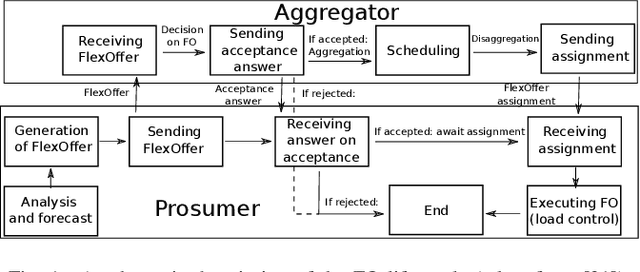
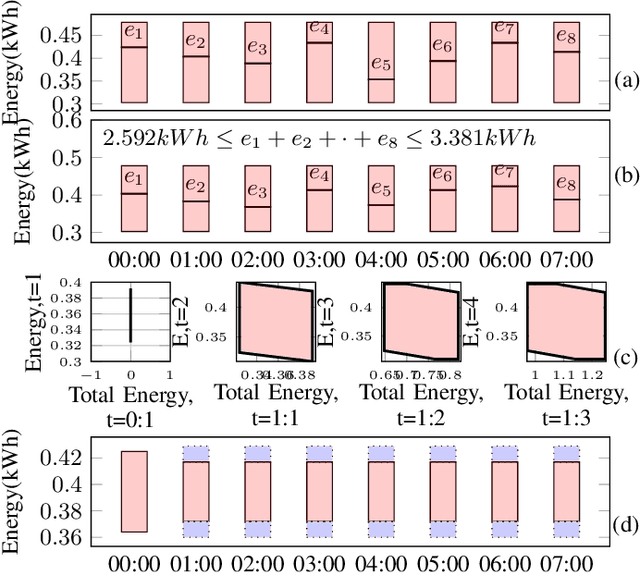
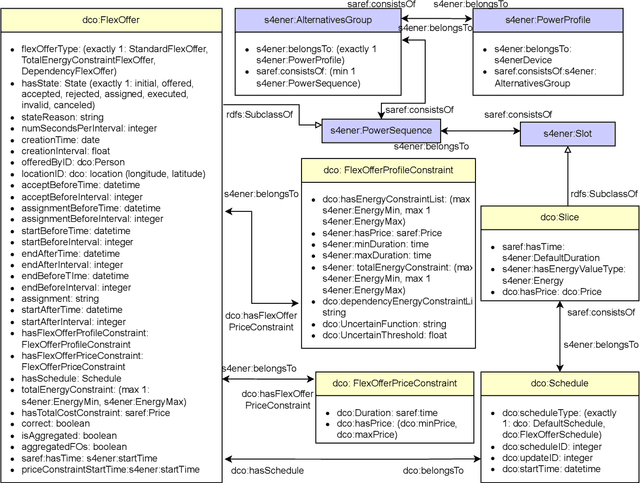
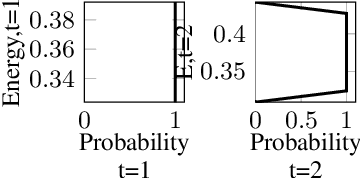
Abstract:A key element to support the increased amounts of renewable energy in the energy system is flexibility, i.e., the possibility of changing energy loads in time and amount. Many flexibility models have been designed; however, exact models fail to scale for long time horizons or many devices. Because of this, the FlexOffer (FOs) model has been designed, to provide device-independent approximations of flexibility with good accuracy, and much better scaling for long time horizons and many devices. An important aspect of the real-life implementation of energy flexibility is enabling flexible data exchange with many types of smart energy appliances and market systems, e.g., in smart buildings. For this, ontologies standardizing data formats are required. However, the current industry standard ontology for integrating smart devices for energy purposes, SAREF for Energy Flexibility (SAREF4ENER) only has limited support for flexibility and thus cannot support important use cases. In this paper we propose an extension of SAREF4ENER that integrates full support for the complete FlexOffer model, including advanced use cases, while maintaining backward compatibility. This novel ontology module can accurately describe flexibility for advanced devices such as electric vehicles, batteries, and heat pumps. It can also capture the inherent uncertainty associated with many flexible load types.
CAMEO: Autocorrelation-Preserving Line Simplification for Lossy Time Series Compression
Jan 24, 2025



Abstract:Time series data from a variety of sensors and IoT devices need effective compression to reduce storage and I/O bandwidth requirements. While most time series databases and systems rely on lossless compression, lossy techniques offer even greater space-saving with a small loss in precision. However, the unknown impact on downstream analytics applications requires a semi-manual trial-and-error exploration. We initiate work on lossy compression that provides guarantees on complex statistical features (which are strongly correlated with the accuracy of the downstream analytics). Specifically, we propose a new lossy compression method that provides guarantees on the autocorrelation and partial-autocorrelation functions (ACF/PACF) of a time series. Our method leverages line simplification techniques as well as incremental maintenance of aggregates, blocking, and parallelization strategies for effective and efficient compression. The results show that our method improves compression ratios by 2x on average and up to 54x on selected datasets, compared to previous lossy and lossless compression methods. Moreover, we maintain -- and sometimes even improve -- the forecasting accuracy by preserving the autocorrelation properties of the time series. Our framework is extensible to multivariate time series and other statistical features of the time series.
Digital Twin-Empowered Voltage Control for Power Systems
Dec 09, 2024


Abstract:Emerging digital twin technology has the potential to revolutionize voltage control in power systems. However, the state-of-the-art digital twin method suffers from low computational and sampling efficiency, which hinders its applications. To address this issue, we propose a Gumbel-Consistency Digital Twin (GC-DT) method that enhances voltage control with improved computational and sampling efficiency. First, the proposed method incorporates a Gumbel-based strategy improvement that leverages the Gumbel-top trick to enhance non-repetitive sampling actions and reduce the reliance on Monte Carlo Tree Search simulations, thereby improving computational efficiency. Second, a consistency loss function aligns predicted hidden states with actual hidden states in the latent space, which increases both prediction accuracy and sampling efficiency. Experiments on IEEE 123-bus, 34-bus, and 13-bus systems demonstrate that the proposed GC-DT outperforms the state-of-the-art DT method in both computational and sampling efficiency.
Domain Adaptation for Time series Transformers using One-step fine-tuning
Jan 12, 2024Abstract:The recent breakthrough of Transformers in deep learning has drawn significant attention of the time series community due to their ability to capture long-range dependencies. However, like other deep learning models, Transformers face limitations in time series prediction, including insufficient temporal understanding, generalization challenges, and data shift issues for the domains with limited data. Additionally, addressing the issue of catastrophic forgetting, where models forget previously learned information when exposed to new data, is another critical aspect that requires attention in enhancing the robustness of Transformers for time series tasks. To address these limitations, in this paper, we pre-train the time series Transformer model on a source domain with sufficient data and fine-tune it on the target domain with limited data. We introduce the \emph{One-step fine-tuning} approach, adding some percentage of source domain data to the target domains, providing the model with diverse time series instances. We then fine-tune the pre-trained model using a gradual unfreezing technique. This helps enhance the model's performance in time series prediction for domains with limited data. Extensive experimental results on two real-world datasets show that our approach improves over the state-of-the-art baselines by 4.35% and 11.54% for indoor temperature and wind power prediction, respectively.
Goal-Oriented Scheduling in Sensor Networks with Application Timing Awareness
Jun 06, 2023Abstract:Taking inspiration from linguistics, the communications theoretical community has recently shown a significant recent interest in pragmatic , or goal-oriented, communication. In this paper, we tackle the problem of pragmatic communication with multiple clients with different, and potentially conflicting, objectives. We capture the goal-oriented aspect through the metric of Value of Information (VoI), which considers the estimation of the remote process as well as the timing constraints. However, the most common definition of VoI is simply the Mean Square Error (MSE) of the whole system state, regardless of the relevance for a specific client. Our work aims to overcome this limitation by including different summary statistics, i.e., value functions of the state, for separate clients, and a diversified query process on the client side, expressed through the fact that different applications may request different functions of the process state at different times. A query-aware Deep Reinforcement Learning (DRL) solution based on statically defined VoI can outperform naive approaches by 15-20%.
A Comparative Study on Unsupervised Anomaly Detection for Time Series: Experiments and Analysis
Sep 10, 2022
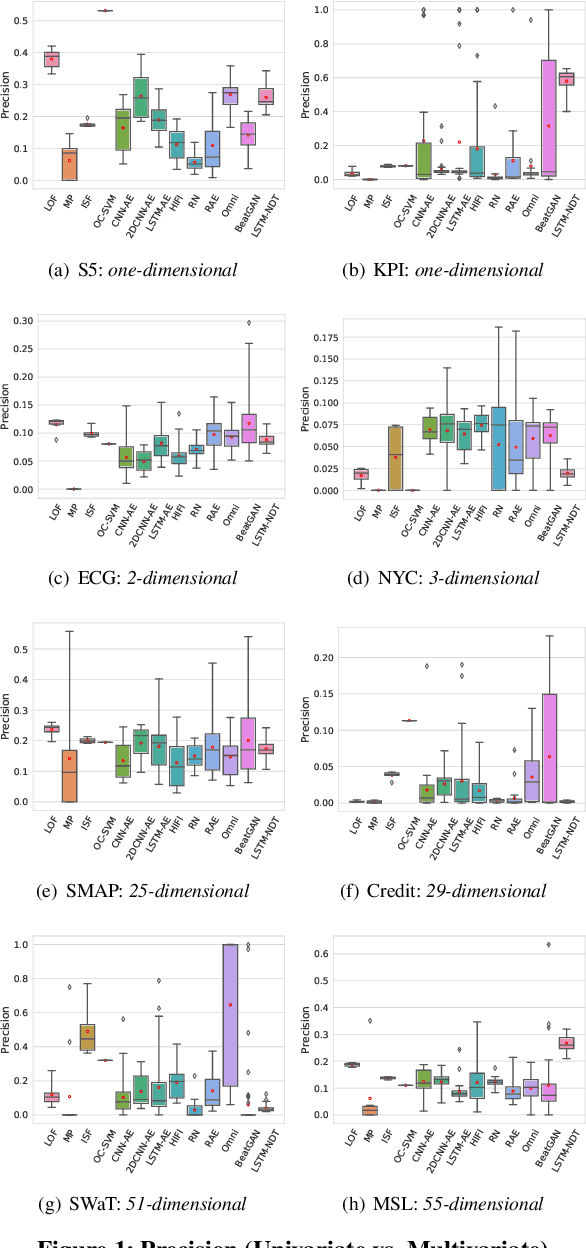
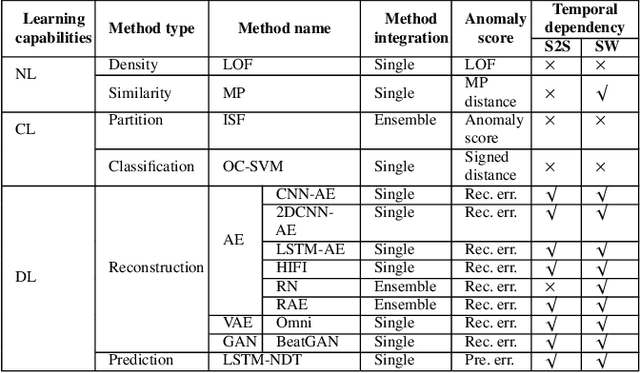

Abstract:The continued digitization of societal processes translates into a proliferation of time series data that cover applications such as fraud detection, intrusion detection, and energy management, where anomaly detection is often essential to enable reliability and safety. Many recent studies target anomaly detection for time series data. Indeed, area of time series anomaly detection is characterized by diverse data, methods, and evaluation strategies, and comparisons in existing studies consider only part of this diversity, which makes it difficult to select the best method for a particular problem setting. To address this shortcoming, we introduce taxonomies for data, methods, and evaluation strategies, provide a comprehensive overview of unsupervised time series anomaly detection using the taxonomies, and systematically evaluate and compare state-of-the-art traditional as well as deep learning techniques. In the empirical study using nine publicly available datasets, we apply the most commonly-used performance evaluation metrics to typical methods under a fair implementation standard. Based on the structuring offered by the taxonomies, we report on empirical studies and provide guidelines, in the form of comparative tables, for choosing the methods most suitable for particular application settings. Finally, we propose research directions for this dynamic field.
Adaptive User-Oriented Direct Load-Control of Residential Flexible Devices
May 09, 2018

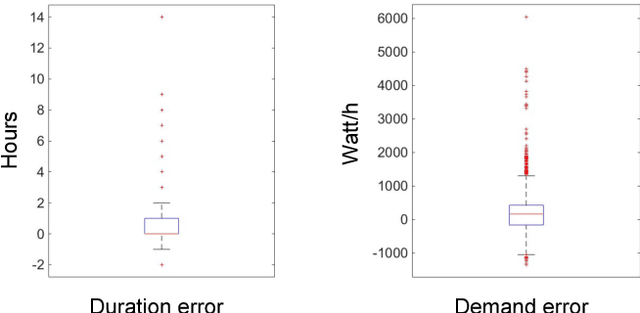
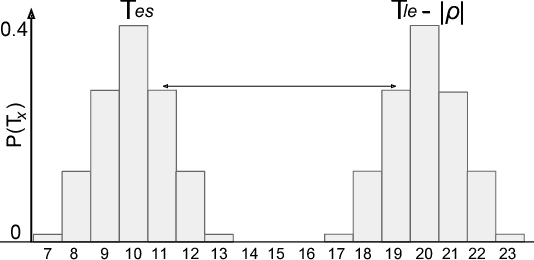
Abstract:Demand Response (DR) schemes are effective tools to maintain a dynamic balance in energy markets with higher integration of fluctuating renewable energy sources. DR schemes can be used to harness residential devices' flexibility and to utilize it to achieve social and financial objectives. However, existing DR schemes suffer from low user participation as they fail at taking into account the users' requirements. First, DR schemes are highly demanding for the users, as users need to provide direct information, e.g. via surveys, on their energy consumption preferences. Second, the user utility models based on these surveys are hard-coded and do not adapt over time. Third, the existing scheduling techniques require the users to input their energy requirements on a daily basis. As an alternative, this paper proposes a DR scheme for user-oriented direct load-control of residential appliances operations. Instead of relying on user surveys to evaluate the user utility, we propose an online data-driven approach for estimating user utility functions, purely based on available load consumption data, that adaptively models the users' preference over time. Our scheme is based on a day-ahead scheduling technique that transparently prescribes the users with optimal device operation schedules that take into account both financial benefits and user-perceived quality of service. To model day-ahead user energy demand and flexibility, we propose a probabilistic approach for generating flexibility models under uncertainty. Results on both real-world and simulated datasets show that our DR scheme can provide significant financial benefits while preserving the user-perceived quality of service.
Utilizing Device-level Demand Forecasting for Flexibility Markets - Full Version
May 02, 2018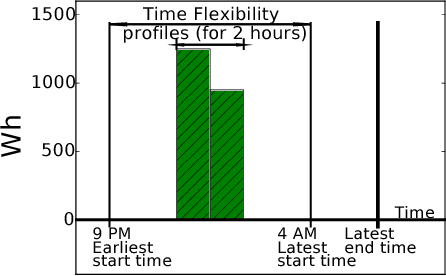

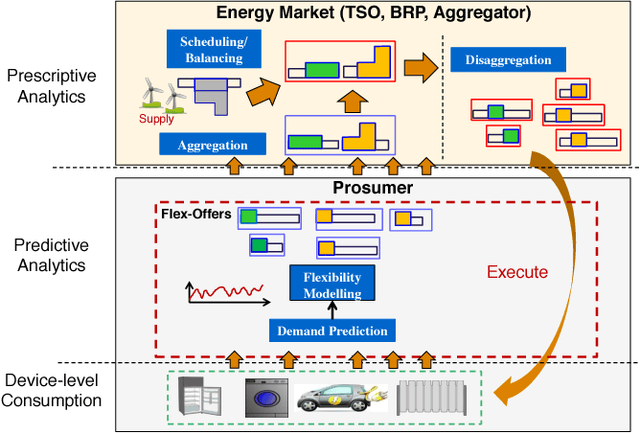

Abstract:The uncertainty in the power supply due to fluctuating Renewable Energy Sources (RES) has severe (financial and other) implications for energy market players. In this paper, we present a device-level Demand Response (DR) scheme that captures the atomic (all available) flexibilities in energy demand and provides the largest possible solution space to generate demand/supply schedules that minimize market imbalances. We evaluate the effectiveness and feasibility of widely used forecasting models for device-level flexibility analysis. In a typical device-level flexibility forecast, a market player is more concerned with the \textit{utility} that the demand flexibility brings to the market, rather than the intrinsic forecast accuracy. In this regard, we provide comprehensive predictive modeling and scheduling of demand flexibility from household appliances to demonstrate the (financial and otherwise) viability of introducing flexibility-based DR in the Danish/Nordic market. Further, we investigate the correlation between the potential utility and the accuracy of the demand forecast model. Furthermore, we perform a number of experiments to determine the data granularity that provides the best financial reward to market players for adopting the proposed DR scheme. A cost-benefit analysis of forecast results shows that even with somewhat low forecast accuracy, market players can achieve regulation cost savings of 54% of the theoretically optimal.
 Add to Chrome
Add to Chrome Add to Firefox
Add to Firefox Add to Edge
Add to Edge